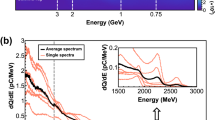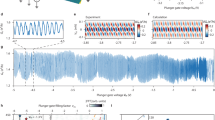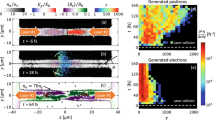Abstract
A NUMBER of experiments have been made on the angular distribution of electron-positron pairs liberated by a beam of γ-rays, but the results, where it is possible to compare, them, do not seem to be in agreement. It is therefore of interest to see what the theory predicts, and in the following a short account is given of the results obtained by a rigorous treatment of the problem. The method used is an extension of that given by us1 to find the total number of pairs created. So far, the calculations have been made for Z (atomic number) = 84, hν = 5 mc2, and Z = 50, hν = 3 mc2 and 5 mc2, where hν is the energy of the γ-ray.
This is a preview of subscription content, access via your institution
Access options
Subscribe to this journal
Receive 51 print issues and online access
$199.00 per year
only $3.90 per issue
Buy this article
- Purchase on SpringerLink
- Instant access to full article PDF
Prices may be subject to local taxes which are calculated during checkout
Similar content being viewed by others
References
Jaeger and Hulme, Proc. Roy. Soc., A, 153, 443 (1936).
Bethe and Heitler, Proc. Roy. Soc., A, 146, 83 (1934).
Grosev and Frank, Comptes rendus (Doklady), 19, 52 (1938).
Alichanian, Dzelepov and Spivac, Comptes rendus (Doklady), 19, 379 (1938).
Author information
Authors and Affiliations
Rights and permissions
About this article
Cite this article
JAEGER, J., HULME, H. Angular Distribution of Electron Pairs. Nature 142, 573 (1938). https://doi.org/10.1038/142573a0
Issue date:
DOI: https://doi.org/10.1038/142573a0



